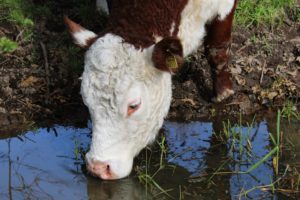Nevada Vested Water Rights on Public Land

The Nevada Supreme reversed itself on title to vested water rights on public land. The court’s seven-person panel unanimously agreed that title to vested water rights established for grazing purposes upon public land is determined by priority of possession of the water right. In other words, the water right belongs to whomever can trace its interest back to the original appropriation. They must also demonstrate that possessory interest has been continually exercised. 
In this case, three parties were all determined to have a connection to the original grazier. They accordingly held vested stock water rights with an 1862 priority date. The decision, issued April 6, 2021, concludes a matter that has been working its way through the state’s court system for 10 years.
Underlying Vested Water Rights Case
In 2011, Daniel & Eddyann Filippini filed an action seeking, among other things, to determine priority dates for watering cattle from Trout Creek in Lander County. One of the parties, Rand Properties, Inc., appealed the initial ruling by the Lander County District Court. The Supreme Court sent the matter back to the district court for additional fact-finding. In so doing, the Supreme Court also reversed the district court’s judgment. That judgment said that stock water rights passed by priority of possession, citing a 1931 case, Steptoe Live Stock Co. v. Gulley, which purportedly stated that “stock water rights on public domains are passed by chain of title.”
After the Lander County District Court issued its findings on remand, Rand again appealed. The Supreme Court seized on the opportunity to admit its mistake. In a footnote on Page 10 of the 14-page order affirming the district court’s ruling, the Supreme Court elaborated:
“To the extent that in our prior order and reversal and remand we concluded that vested stock water rights on public lands pass by chain of title, we now expressly reject that conclusion. … Our prior order cited to Steptoe in support of this erroneous conclusion, however, the reasoning set forth in Steptoe supports concluding that the priority of vested stock water rights are established by possession or beneficial use.”
The order goes on to confirm that the ruling in Steptoe is consistent with federal law concerning the appropriation of water on public lands, 43 USC 661. This article provides “that rights based on priority of possession, which have vested and accrued and are recognized and acknowledged by local custom, shall be maintained and protected.” (Italics in original).

